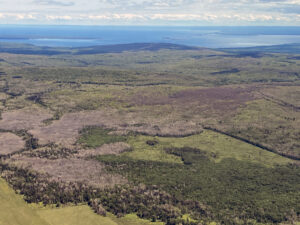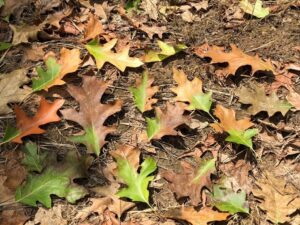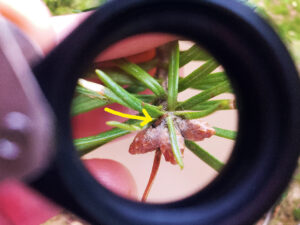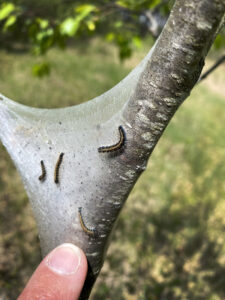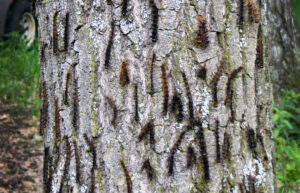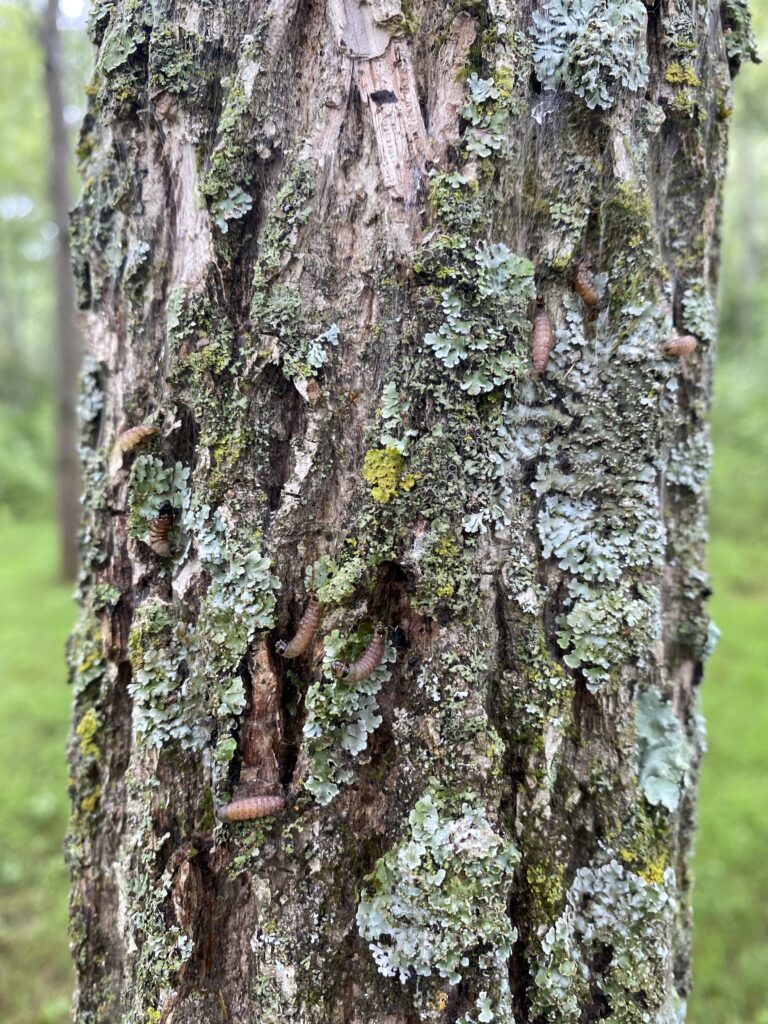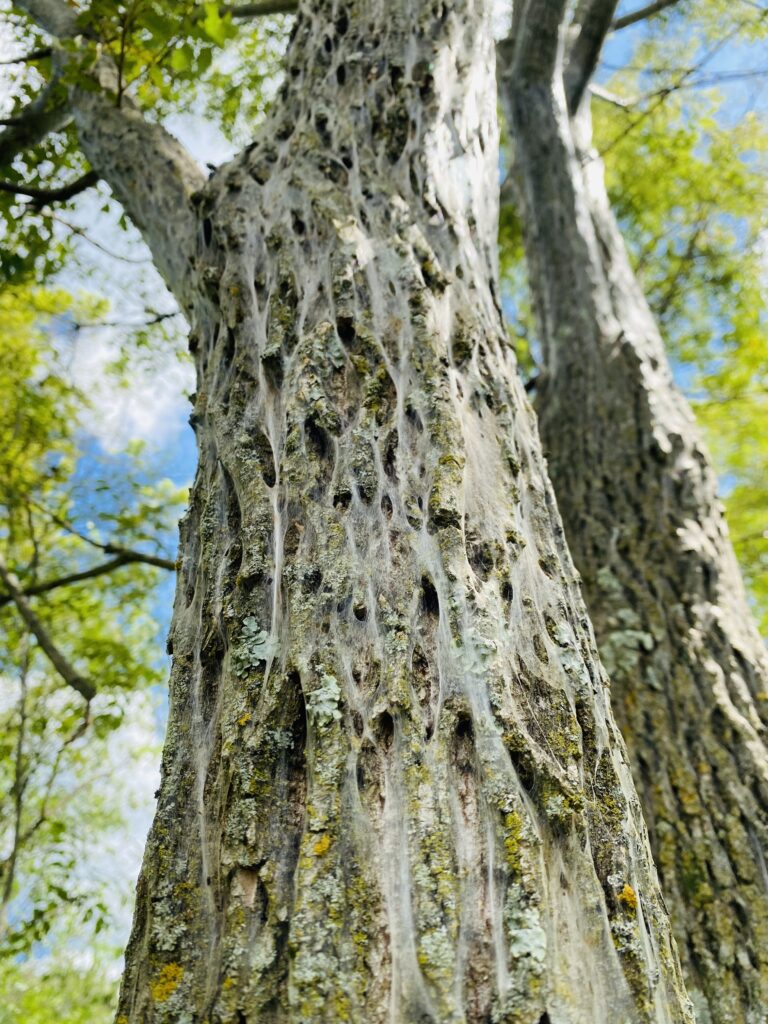By Bill McNee; DNR Forest Health specialist, Oshkosh;
Bill.McNee@wisconsin.gov or 920-360-0942
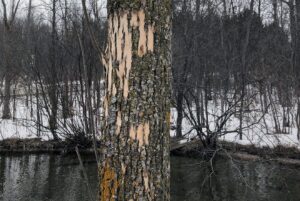
Woodpecker damage is an early sign an ash tree might be infested with emerald ash borer. / Photo Credit: Wisconsin DNR
The Wisconsin Department of Natural Resources (DNR) encourages property owners to watch for woodpecker damage to their ash trees this winter. If damage is found, property owners should make plans to take action in the spring.
Woodpecker damage, often called “flecking,” happens when birds peck away some of a tree’s bark to access the larvae underneath. Flecking is a common early sign that an ash tree might be infested with emerald ash borer (EAB), an invasive insect. EAB is the most damaging threat to Wisconsin trees, killing more than 99% of the untreated ash trees it infests.
Continue reading “Woodpecker Damage On Ash Trees May Indicate Emerald Ash Borer”

